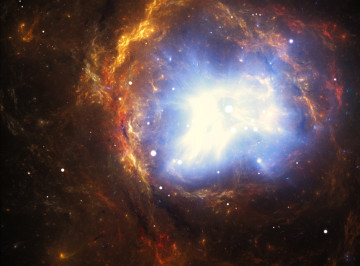 In this edition, Linda Kohanov writes about an experience she felt was too challenging to publish in her first book The Tao of Equus. In finally sharing the contents of this long lost chapter, she also offers a special holiday gift: The Creation According to Eve, an evocative spoken word piece, set to music by Steve Roach, based on a story that she accessed twenty years ago through an unexpected, deeply mystical encounter with her horse Rasa.
In this edition, Linda Kohanov writes about an experience she felt was too challenging to publish in her first book The Tao of Equus. In finally sharing the contents of this long lost chapter, she also offers a special holiday gift: The Creation According to Eve, an evocative spoken word piece, set to music by Steve Roach, based on a story that she accessed twenty years ago through an unexpected, deeply mystical encounter with her horse Rasa.
Frantic consumerism aside, the holidays offer opportunities to gather with family and friends, and explore the promise of a deeper, more soulful connection with life. Time and space are among the most valuable gifts we receive: time off from the workaday world, space to decompress, celebrate, and reflect. As the dark night of the winter solstice cradles the promise of a new year, large numbers of people from various religious and philosophical persuasions acknowledge the spiritual dimensions of existence. Some may pause only briefly to suspend cynicism and embrace a more optimistic view of humanity, perhaps as they lie on the couch, flipping channels, catching the last 20 minutes of Jimmy Stuart’s depression and renewal in the classic film It’s a Wonderful Life.
But millions more take the time to attend religious services and holiday concerts, volunteer at homeless shelters, light candles, prepare meals that have deep symbolic significance, decorate their homes with images of hope and transformation, watch their favorite recording artists sing traditional songs on television, or perhaps go caroling themselves. No other season encourages so many people to engage in activities involving music, mythic insights, ritual and storytelling: creative forms of expression designed to draw people out of a mundane state of mind into a wider view, reminding each and every one us of a higher calling—and the sacredness of all life.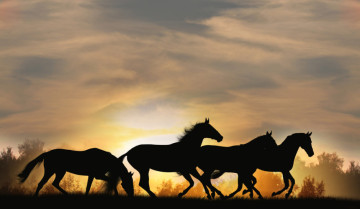
For me, the holidays also provide time to spend with my horses, not only for long walks through the desert, but for personal contemplation and renewal, for the ancient yet somehow still innovative wisdom that arises when I connect more deeply with these powerful, gentle, intensely mindful beings. Over 20 years ago, I discovered the consciousness-expanding benefits of sitting quietly with my herd when my black Arabian mare Rasa became lame, a frustrating yet ultimately transformational adventure I explored in my first book The Tao of Equus. But there was one significant chapter that I started to write, and then filed away because even I thought it was a bit too strange to reveal at that time. Only now, after understanding the symbolism and the practical wisdom behind this mysterious interaction with Rasa, am I open to sharing it publically. And in order to do it justice, I have to present the core experience through music and mythic storytelling.
Voice of Remembering
Though I decided not to reveal the details of this encounter, I vaguely touched on it in Chapter Three of The Tao of Equus by briefly summarizing the emergence of an unusual narrative style I accessed in the presence of my horses. In 1993, the year Rasa came into my life, I started writing a series of evocative pieces in an uncharacteristically ancient “voice” while preparing the liner notes to my husband Steve Roach’s tribal-ambient CDs Origins and Artifacts:
“At first I attributed these bouts of inspiration to the music alone, but I had been writing about tribal infused styles for years without being affected in quite this way. Then it occurred to me that the emergence of this more creative imagery coincided with the year I began spending several hours a day in the presence of these magnificent animals. Whenever I was with the horses, I felt connected to a part of myself that seemed more ancient, more mysterious, and more in tune with the indigenous instruments and rhythms that Steve was weaving into his increasingly primal soundscapes, and I yearned to return to a much older form of human awareness.
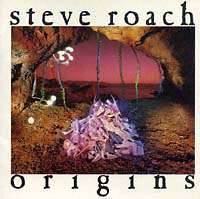 “These ideas came into play as I continued to write in a style I began calling the Voice of Remembering. In the summer of 1995, the liner notes to Origins and Artifacts gave birth to a book length project titled The Black Horse Speaks. As I worked in this mode, I became increasingly adept at entering an awareness somewhere between dreaming and waking, a mildly ecstatic state that straddled the boundaries of this world and the other….Using a metaphorical representation of my experiences with Rasa as a point of departure, I set the stage for a journey through an Otherworld the narrator travels with a lame black horse as her main companion. Along the way she finds herself having to explain the customs of human thought to creatures who’ve never been to the logic-laden land they call The Surface. At a pivotal point, she meets a group of amorphous beings called The Ancestors who suggest that she invent new myths and reinterpret old ones to characterize the features of human consciousness in a much larger matrix of potential knowledge that gives rise to infinite styles of nonhuman thought and awareness throughout the universe. In the process, she discovers a long-buried secret that saves the black horse’s life.
“These ideas came into play as I continued to write in a style I began calling the Voice of Remembering. In the summer of 1995, the liner notes to Origins and Artifacts gave birth to a book length project titled The Black Horse Speaks. As I worked in this mode, I became increasingly adept at entering an awareness somewhere between dreaming and waking, a mildly ecstatic state that straddled the boundaries of this world and the other….Using a metaphorical representation of my experiences with Rasa as a point of departure, I set the stage for a journey through an Otherworld the narrator travels with a lame black horse as her main companion. Along the way she finds herself having to explain the customs of human thought to creatures who’ve never been to the logic-laden land they call The Surface. At a pivotal point, she meets a group of amorphous beings called The Ancestors who suggest that she invent new myths and reinterpret old ones to characterize the features of human consciousness in a much larger matrix of potential knowledge that gives rise to infinite styles of nonhuman thought and awareness throughout the universe. In the process, she discovers a long-buried secret that saves the black horse’s life.
“Many of the breakthroughs I had in understanding the language and behavior of horse-human interactions came during the writing of this unusual text. The strange places I was traveling in my imagination demanded a deeper understanding of history, religion, mythology, philosophy, psychology, and the workings of the creative process itself. It was as if pages and pages of disconnected insights were digested organically by some unconscious feature of my brain, only to reemerge as an intricate tapestry of ideas woven by the Voice of Remembering.” (Quote from pages 46-47 of The Tao of Equus)
People sometimes write me asking for a copy of this project, but I never did publish The Black Horse Speaks. I never was able to bring it to a satisfying conclusion, and maybe never will. It seems to be an ongoing drama that has taken on a life of its own in a mythic otherworld parallel to my physical existence. And yet the insights tapped by the Voice of Remembering continue to inform my nonfiction books and articles.
Still, I must emphasize that, even now, it is time spent with my own living horses that opens the veil between my normal, waking consciousness, and a timeless, otherworldly voice capable of integrating all kinds of insights that the modern logical mind would interpret as hopelessly paradoxical.
Logos and Mythos
If you go back in time a few thousand years, you find a number of civilizations that embraced two very different forms of consciousness. Most ancient people, in fact, seemed to move back and forth between these states, fluidly, without giving it much thought (which is why in many early books, including the Bible, historic material and symbolic insights are all mixed together in ways that are downright confounding to those who’ve grown up in an increasingly technological society.)
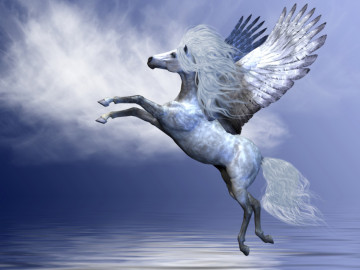 The ancient Greeks distinguished these perspectives as logos and mythos. In the book of essays How and Why We Still Read Jung, David Tacey explains why the early-20th century psychiatrist Carl Jung studied this feature of Greek philosophy in depth: “Logos is directed thinking, controlled consciousness and used to describe reality in its outward, historical, and factual manifestation. Mythos is undirected thinking, which arises from the unconscious and spontaneously forces itself upon inspired writers and storytellers….”
The ancient Greeks distinguished these perspectives as logos and mythos. In the book of essays How and Why We Still Read Jung, David Tacey explains why the early-20th century psychiatrist Carl Jung studied this feature of Greek philosophy in depth: “Logos is directed thinking, controlled consciousness and used to describe reality in its outward, historical, and factual manifestation. Mythos is undirected thinking, which arises from the unconscious and spontaneously forces itself upon inspired writers and storytellers….”
Tacey goes on to emphasize: “We have confused the nature of the real by trusting far too much in logos. It is an overdose of logos that has made us unreceptive to the sacred and its symbolic language. Religion and myth perform the vital function of reconnecting consciousness to its source, to a life independent of itself….To lose our sacred myths and images is to lose our psychological health and well being. Without them, we become rudderless, lacking purpose and direction in the universe. We become strangers to ourselves, and our life and identity suffer from this spiritual alienation. If governments understood how much our psychological health depends on the cultivation of a symbolic life, they would put far more emphasis on exploring the connections between mind and body, psyche and society, and cultural attitude and well-being.”
These quote comes from pages 181-82 of How and Why We Still Read Jung, in Tacey’s essay, “JUNG: Respect for the Non-Literal.” I highly recommend reading this entire chapter for a very clear, succinct understanding of how intensely fundamentalist religions and atheism both suffer from modern civilization’s bias toward logos.
Growing up in the 1960s, in a conservative Ohio town where the counterculture movement never really did hit, I felt that there was something deeper calling me, something that neither church membership nor a university education was able to help me access, though both were places that encouraged people to seek more from life than a workaday existence. Music filled in some of the gaps, bringing feeling and nonverbal awareness into the mix, but it wasn’t until I began spending large amounts of undirected time with my horses that the Voice of Remembering took a decidedly recognizable form and spoke to me from the mythos mind.
It all started with a pivotal dream: An intensely conservative male co-worker was challenging my relationship with Rasa, who began to rear and buck in response. I stepped between the two of them (before the presumptuous man got hurt), and declared, “Rasa is very smart, and I’m teaching her to speak,” whereupon the black horse kissed my womb, my solar plexus, my heart, and my throat, and finally laid a big smacker right on my lips. A few weeks later, I was contemplating the meaning of this dream when I was out walking through the desert with Rasa. Suddenly I felt the incredible urge to write. What came out over the next few days was very strange indeed: an unusual re-telling of humanity’s lost connection to paradise called “The Creation According to Eve.”
To this day, I really have no memory of how this complex story emerged, but in analyzing it over time, I was fascinated to realize that it somehow integrated aspects of Jewish, Christian, Muslim, Taoist, and Buddhist perspectives on the problems—and potential—of human consciousness, along with some ancient cross-cultural notions on how the universe was created through a massive sound emerging from the silence of the void, a sound that continues to sing the world into being through the continuous symphony of creation.
Music of the Spheres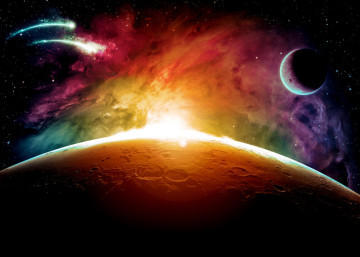
What scientists call “The Big Bang” was acknowledged in Greek, Judeo-Christian, Indian (India), and Tibetan spiritual and scientific texts eons ago. The Sanskrit phrase Nada Brahma means “the world is sound.” Indian classical music is still considered a scared art connecting people to the primal consciousness of the universe.
The Greeks explored this notion in a more scientific direction, studying a Music of the Spheres that they calculated from the orbits of the planets. More than 2500 years ago, the mathematical genius Pythagoras told his followers that a stone is “frozen music.” He and his contemporaries felt that a systematic study of the harmonics created by celestial bodies moving through space in relation to each other was just as important as developing theories on how sound works in our earthly atmosphere. “Before we make music, music makes us,” observed psychologist George Leonard. This ancient idea is “fully validated by modern science; we now know that every particle in the physical universe takes its characteristics from the pitch and pattern and overtones of its particular frequencies….The deep structure of music is the same as the deep structure of everything else.”
In his book Nada Brahma: The World is Sound: Music and the Landscape of Consciousness (from which the above quote was taken), German music critic Joachim-Ernst Berendt also explores the power of mantras and other sacred words. “The Tibetans say that the entire universe came into being out of the primal sound OM, the primal mantra, the primal syllable that again and again renews the command ‘Let there be….’ Nor is this a concept foreign to those of us born in the Judeo-Christian tradition….That is why the Gospel according to John says: “In the beginning was the word. And the word was with God. And the word was God” (John 1:1). This knowledge of the mantric power of God’s word exists not only in the Book of Genesis at the beginning of the Old Testament and again in the Gospel according to John. This knowledge is the very foundation of the Holy Scripture. That is why it is the ‘word of God.’”
The vast majority of civilizations from antiquity to the Middle Ages were fascinated with the sacred qualities of sound, believing that the spoken word itself was a powerful force of creation, not to be used lightly. In the New Testament, Jesus was distinguished as “the word made flesh,” the primal creative vibration taking human form to interact with people who have lost their connection to the Source. (For more information on the worldwide history of music and sound mysticism, and modern scientific theories that coincide with this perspective, I highly recommend reading Berendt’s entire book, which features a forward by the famous physicist and author, Fritjof Capra, no less.)
The mystical power of sound—and its relationship to silence (the womb of creation, the space that cradles invisible, nonverbal aspects of creation)—weaves its way throughout The Creation According to Eve, with one addition that you don’t find in any previous writings on this subject: the importance of feminine wisdom. The piece opens with a poetic description of how humanity has “suffered through the silence of women” since the beginning of recorded history, that moment when our ancestors stepped out of “Eden,” separated themselves from God and Nature, and began to speak and eventually write about their tempestuous experiences “in exile,” primarily from a male perspective.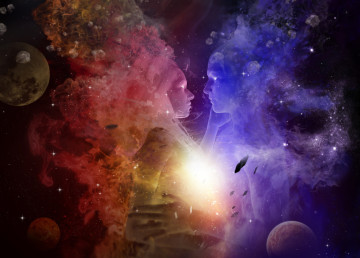
The Voice of Remembering insists that a retelling of the creation story “in a feminine voice” is an essential first step in bringing balance to our troubled world. The narrator outlines an unusual perspective on the trajectory of human social evolution: Biblical accounts already state that Adam was given the power of sound, and encouraged to name what already existed. (And indeed we see that history was written primarily by men.) The Voice of Remembering specifies that Eve, on the other hand, was in touch with creations not yet born through her relationship with the power of silence. This retelling of the classic story emphasizes that the original plan called for each to “reclaim the knowledge revealed by the other,” so that man and woman could become creators themselves. Over time, however, a disruptive element kept Adam and Eve in a state of fitful adolescence. Women were forced to stay silent to prevent them from introducing new ideas and perspectives that did not support male-dominated, hierarchical cultures. These civilizations maintained supremacy not only through intimidation, but through severely limiting the dissemination of information and suppressing free, creative thought.
In the last few hundred years, of coarse, we know that women were “allowed to speak when they promised to talk of things already named by Adam.” In other words: women were finally given a voice when they were sufficiently socialized to uphold the status quo, when they were so indoctrinated into an aggressive, conquest-oriented, nature-phobic culture that they couldn’t even imagine another way of being. The Creation According to Eve, however, does not reject or blame “the sons of Adam” for this state of imbalance. It presents the problem as a feature of dualistic consciousness in a state of arrested development, and offers a solution to help men and women reach psychological and spiritual maturity.
Something in Tears
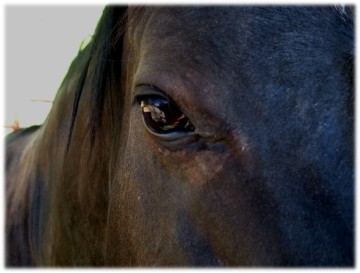 After completing the manuscript, I got the feeling that Rasa (perhaps the dream version, perhaps the “real” version; I really wasn’t sure) was the generator of this story. Even stranger, I couldn’t shake the impression that I needed to speak these words out loud—to her—for some reason I couldn’t begin to fathom. And so one evening after everyone had left the barn, I sat with Rasa and read The Creation According to Eve. To my surprise, she pricked up her ears, stopped grazing, and stood by my side for the entire reading.
After completing the manuscript, I got the feeling that Rasa (perhaps the dream version, perhaps the “real” version; I really wasn’t sure) was the generator of this story. Even stranger, I couldn’t shake the impression that I needed to speak these words out loud—to her—for some reason I couldn’t begin to fathom. And so one evening after everyone had left the barn, I sat with Rasa and read The Creation According to Eve. To my surprise, she pricked up her ears, stopped grazing, and stood by my side for the entire reading.
Most astonishing, tears began streaming out of both of her eyes. I had the strangest feeling that she had been carrying this story around her entire life, waiting for some human to come along and give it voice in this world, a world in which the voices of horses as intelligent, soulful beings are resolutely discounted, in the same way that women’s voices too had been discounted throughout history.
Now, you can probably guess why I didn’t include this experience in The Tao of Equus. A horse who inspires me to tell the creation story from Eve’s perspective, and then cries silently when I speak it aloud? Yikes! That first book was already challenging so many conventional notions about human-animal relationships that I felt I needed to hold back on this more adventurous story. Yet perhaps more important to me at that time, the experience was so intimate and transformational that I couldn’t bear to have readers, let alone book critics, judge it.
More than 20 years later, I’ve recorded The Creation According to Eve with music by my husband Steve Roach. It is one of the deepest, most personally valuable gifts I can offer to those who’ve enjoyed my previous books, and for some reason I’m finally brave enough to release it to the world.
You can hear it streaming at https://lindakohanov.bandcamp.com/album/the-creation-according-to-eve. If you find this spoken word piece inspiring and want to download it, any donation you make will go toward scholarships to upcoming Eponaquest workshops and private sessions. But if you’re interested in learning a bit more about the multi-cultural symbology behind The Creation According to Eve, including the ideas and experiences I gained from working with this material over time, as well as my ability to translate some of these mythos insights into a logos interpretation in my 2013 book The Power of the Herd, well then, read on here before you listen to it for the first time.
Cross Cultural Insights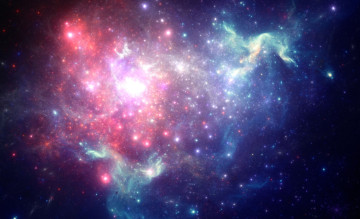
In the 21st century, we have instant, unprecedented access to information—not only news from around the world, but also ancient religious texts and obscure mythic research. In the 1990s, when I first wrote The Creation According to Eve, I had to spend huge amounts of time searching through books and journals in the library to explore some of the imagery. The sources available to me in Tucson were limited, and I soon moved on to other research projects, though the intense perspective of this strange piece of writing continued to inspire me.
In the summer of 2014, while reminiscing about the time I spent with Rasa, I pulled The Creation According to Eve out from my files, and my curiosity was reawakened. Armed with the Internet, I decided to look up a few references to better understand the multi-cultural symbols our horse-human interactions had unearthed when we cavorted through the desert in a mythos state of mind.
First of all, I had never before realized that the tale of Adam and Eve was the most congenial common ground beneath the Jewish, Christian and Muslim faiths, which as we know, tend to diverge from there. Different yet somehow still-connected versions of the Creation story occur not only in the Bible, but also in other significant religious writings from these three traditions throughout history.
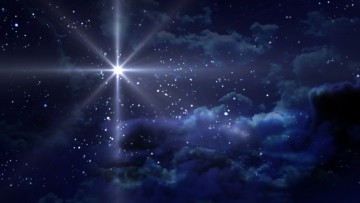 Still, I was initially surprised, and uncomfortable, with the appearance of Lucifer in The Creation According to Eve. I wasn’t raised in a fire and brimstone church, and we didn’t talk a whole lot about the devil. So I didn’t know much about the history of this disturbing character. I had heard somewhere along the way that Satan meant “opposer,” which certainly made sense. But I was always confused at how such a malevolent figure could also be called “Lucifer,” which means ‘bringing light.” The Creation According to Eve solved that dilemma to my satisfaction by presenting the fallen angel as a dangerous feature of intelligence. As an archetype illuminating one of the pitfalls humans face in reaching the age of reason, Lucifer plays a significant—dare I say enlightening—role in The Creation According to Eve.
Still, I was initially surprised, and uncomfortable, with the appearance of Lucifer in The Creation According to Eve. I wasn’t raised in a fire and brimstone church, and we didn’t talk a whole lot about the devil. So I didn’t know much about the history of this disturbing character. I had heard somewhere along the way that Satan meant “opposer,” which certainly made sense. But I was always confused at how such a malevolent figure could also be called “Lucifer,” which means ‘bringing light.” The Creation According to Eve solved that dilemma to my satisfaction by presenting the fallen angel as a dangerous feature of intelligence. As an archetype illuminating one of the pitfalls humans face in reaching the age of reason, Lucifer plays a significant—dare I say enlightening—role in The Creation According to Eve.
It seems that I owe some of these insights to folk tales that ancient Middle Eastern desert tribes told about Lucifer, who was also known as “the morning star,” another name for the planet we now call Venus. Somehow, the Voice of Remembering accessed several of these archaic stories from Jewish, Christian and Muslim traditions, integrated them with modern planetary science, and made symbolic sense of them.
The clincher for me came when The Voice of Remembering characterized Lucifer’s origin as “light that sacrificed its heart to the glory of its pride.” In other words, this celestial character represents intelligence that separates itself from love through an inflated sense of self-importance—a very ancient yet still potent dilemma. How many of us know geniuses with a severely compromised ability to empathize with other people and other species, who treat living beings as objects and statistics as a result? In the nuclear age, this is more than a personal tragedy. It’s a very dangerous split. As spiritual writer Thomas Moore observed, “Logos without Eros becomes sadistic.” In this regard, we see “the devil’s work” running amok throughout our world any time human intelligence disconnects from love, losing the ability to care about others in the process.
Also interesting is the scene where Lucifer realizes, all too late, that his brilliance, like the planet Venus, merely reflects light from the sun, suggesting metaphorically that intelligence is not self-generating, but related to a larger, more expansive creative force. To imagine that we are the smartest creatures in the universe, the be-all, end-all of evolution, is a form of hubris characteristic of humans, of course. Throughout history, all kinds of political, scientific and religious “geniuses” have asserted that intelligence is what sets “man” apart from “women and lower animals.”
Lucifer’s story mirrors what happens when humanity falls prey to short sighted, egotistical ambition. As he disconnects from the Source of his being, “plunging into darkness for the very first time,” the devil engages a degraded, aggressive, sociopathic form of intelligence to gain control on earth. In this version of the creation story, he achieves his goal by finding an admittedly clever way to keep masculine and feminine consciousness separated—destroying the reputation of the latter, while holding both in a state of arrested development. The story ends with God devising a counterintuitive plan to help men and women recover from this primal split: to develop a balanced, mature consciousness that can “heal the dark star’s toxic legacy” by “placing the knowledge of good and evil in the context of creation.”
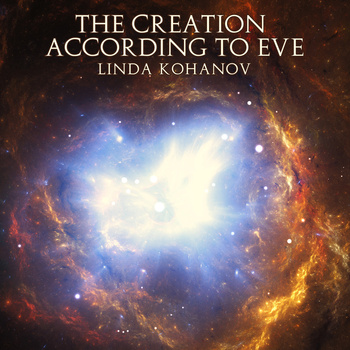 The Creation According to Eve is not light listening, or light reading. (If you want a copy of the manuscript, feel free to email me through info@eponaquest.com ) In playing it for a few select audiences, I’ve seen that people from different religious and philosophical persuasions have a reaction similar to the one I observed in Rasa 20 years ago: silent tears that facilitate an opening to something primal, essential, yet indescribable.
The Creation According to Eve is not light listening, or light reading. (If you want a copy of the manuscript, feel free to email me through info@eponaquest.com ) In playing it for a few select audiences, I’ve seen that people from different religious and philosophical persuasions have a reaction similar to the one I observed in Rasa 20 years ago: silent tears that facilitate an opening to something primal, essential, yet indescribable.
Few of the observations that emerge from this version are new, but when they’re integrated through the magic of mythic storytelling, they have the power to move people more intensely than encyclopedic discussions of the philosophies and insights involved. That is the magic of resurrecting mythos and allowing it to inform and transform the knowledge we’ve gained through logos over the last six thousand years or so.
Chasing the Black Horse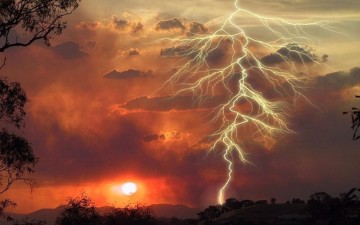
Call it what you want: creative, intuitive, spiritual, archetypal, or shamanic, I have to admit there is an element of this experience that is religious in the sense of the word’s Latin root, which means “to bind, connect, or link back.”
“This original form of religio (‘linking back’) is the essence, the working basis of all religious life, even today, and always will be, whatever future form this life may take,” asserted Carl Jung, who explored symbols of transformation through his numerous writings. In the essay mentioned earlier, David Tacey observed that the use of religion as a socializing force often obscures the far more powerful function of linking us back to “the primordial mind and the ancient past….the sacred, the holy, that which is beyond awareness….We can only know this deeper reality indirectly, through metaphor and symbol,” through dreams, mythic storytelling and modern creative arts “looking for new ways to express psychic realities.”
In this context, my own Voice of Remembering was actually a voice of re-membering, a feature of consciousness connected to a more expansive, creative form of intelligence capable weaving long-separated threads from different times, cultures, philosophies and religions into a cohesive tapestry of meaning.
Jung observed that most of his mid-twentieth-century, European clients were suffering from the overemphasis on concrete, practical, logical thinking that influenced not only science, but religion itself in the Age of Reason, leading to increasing emphasis on literal, historical interpretations of the Bible that robbed many denominations of their connection to those formless spiritual forces that can only be pointed to in parable, metaphor, mythic archetypes, and tales of the miraculous. Jung bridged this gap by embracing scientific, psychological, artistic, and mystical insights, helping patients in crisis to experience an organic integration of these seemingly opposing forces, opening direct access to transcendental sources of wisdom, creativity and healing.
Alcoholics Anonymous founder Bill W. was inspired by Jung’s assertion that a higher power was needed to battle the scourge of addiction. Jung’s work also influenced the mythologist Joseph Campbell, whose PBS series The Power of Myth captivated millions of people craving deeper, more meaningful, more soulful ways of living. In these and many other contexts, Jung was a pioneer in helping people understand and use transformational imagery to aid in healing and spiritual growth. He was not shy in stating that symbols, metaphors and religious rituals/stories connected people to a powerful reality beyond form that interacted meaningfully with the world we could in fact see, touch, taste, smell, and hear. Nonetheless he was still a product of the early twentieth century, able to go only so far afield from the conventional patriarchal, intensely human-centered thinking of that time.
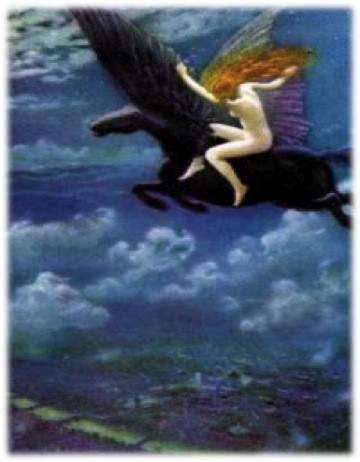 Despite these limitations, Jung’s writings provided support at a crucial moment in my development. It all started when I began experiencing numinous insights and powerful transformational effects with my black Arabian mare Rasa in my mid-30s. At that time, I felt inspired, energized—and incredibly alone. In the early 1990s, few people dared speak, let alone write, about the spiritual side of the horse-human connection. Searching through books and scholarly articles on myths and symbols, I found scraps of superficial comments on the horse as a metaphor for power, travel, creativity, sexual vitality, intuition and instinct, but nothing to explain the strange inner journey my own mare had somehow jump-started in me. Jung’s books weren’t much different in this regard. He discussed horses and other animals as metaphors pointing to potent yet invisible forces that interact with us through dreams, myths and art. Still, one of the dreams he recorded—a dream so compelling that he explored it in three of his books—brought to light an actual experience I seemed to be living.
Despite these limitations, Jung’s writings provided support at a crucial moment in my development. It all started when I began experiencing numinous insights and powerful transformational effects with my black Arabian mare Rasa in my mid-30s. At that time, I felt inspired, energized—and incredibly alone. In the early 1990s, few people dared speak, let alone write, about the spiritual side of the horse-human connection. Searching through books and scholarly articles on myths and symbols, I found scraps of superficial comments on the horse as a metaphor for power, travel, creativity, sexual vitality, intuition and instinct, but nothing to explain the strange inner journey my own mare had somehow jump-started in me. Jung’s books weren’t much different in this regard. He discussed horses and other animals as metaphors pointing to potent yet invisible forces that interact with us through dreams, myths and art. Still, one of the dreams he recorded—a dream so compelling that he explored it in three of his books—brought to light an actual experience I seemed to be living.
I originally summarized this pivotal find in The Tao of Equus, but I’d like to quote the entire dream here because there are aspects I didn’t share previously that have much in common with the Taoist imagery in The Creation According to Eve. The dream belonged to a theological student who was facing a crisis of faith. Jung was fascinated with the sophisticated, archetypal wisdom it conveyed to a young man who had grown up in a conservative religious family. Throughout the dream, we see archetypes that express the interconnected nature of concepts the Western scientific and religious minds see as complete opposites: black and white, conscious and unconscious, dark and light, male and female, human and animal, spirit and nature. In this respect, the dream’s underlying philosophy has more in common with the Taoist yin yang symbol of wholeness than with the kinds of religious iconography an early-20th century, European student of religion would have encountered.
(Like I mentioned earlier, Jung discussed this vision in three of his books. I’m quoting the dream and his subsequent interpretations from the book in which I originally encountered this material: The Archetypes and the Collective Unconscious.)
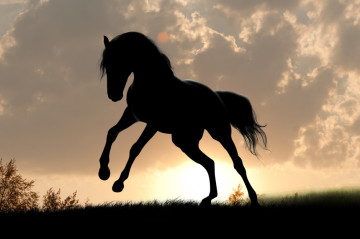 “[The dreamer] was standing in the presence of a handsome old man dressed entirely in black. He knew it was the white magician. This personage had just addressed him at considerable length, but the dreamer could no longer remember what it was about. He had only retained the closing words: “And for this we need the help of the black magician.” At that moment the door opened and in came another old man exactly like the first, except that he was dressed in white. He said to the white magician [who was dressed in black], “I need your advice…..” The black magician [who was dressed in white] then began to relate his story. He had come from a distant land where something extraordinary had happened. The country was ruled by an old king who felt his death near. He—the king—had sought out a tomb for himself. For there were in that land a great number of tombs from ancient times, and the king had chosen the finest for himself. According to legend, a virgin had been buried in it. The king caused the tomb to be opened, in order to get it ready for use. But when the bones it contained were exposed to the light of day, they suddenly took on life and changed into a black horse, which at once fled into the desert and there vanished. The black magician had heard of this story and immediately set forth in pursuit of the horse. After a journey of many days, always on the track of the horse, he came to the desert and crossed to the other side, where the grasslands began again. There he met the horse grazing, and there also he came upon the find on whose account he now needed the advice of the white magician. For he had found the lost keys of paradise, and he did not know what to do with them. At this exciting moment, the dreamer awoke.”
“[The dreamer] was standing in the presence of a handsome old man dressed entirely in black. He knew it was the white magician. This personage had just addressed him at considerable length, but the dreamer could no longer remember what it was about. He had only retained the closing words: “And for this we need the help of the black magician.” At that moment the door opened and in came another old man exactly like the first, except that he was dressed in white. He said to the white magician [who was dressed in black], “I need your advice…..” The black magician [who was dressed in white] then began to relate his story. He had come from a distant land where something extraordinary had happened. The country was ruled by an old king who felt his death near. He—the king—had sought out a tomb for himself. For there were in that land a great number of tombs from ancient times, and the king had chosen the finest for himself. According to legend, a virgin had been buried in it. The king caused the tomb to be opened, in order to get it ready for use. But when the bones it contained were exposed to the light of day, they suddenly took on life and changed into a black horse, which at once fled into the desert and there vanished. The black magician had heard of this story and immediately set forth in pursuit of the horse. After a journey of many days, always on the track of the horse, he came to the desert and crossed to the other side, where the grasslands began again. There he met the horse grazing, and there also he came upon the find on whose account he now needed the advice of the white magician. For he had found the lost keys of paradise, and he did not know what to do with them. At this exciting moment, the dreamer awoke.”
Jung proceeded to explain the king as a “ruling symbol that wants to go to its eternal rest…His choice falls, fittingly on the grave of anima” (a term Jung used to identify the feminine aspect of the male psyche that is suppressed in most men).
It’s really quite impressive that a young man who grew up in the still intensely male-dominated atmosphere of the early 1900s (when women were fighting for the right to vote), would have a dream that recommended resurrecting a long-buried feminine principle. In a wider cultural sense, the ancestral princess could also represent ancient feminine wisdom that had been hidden from view throughout the rise of patriarchal power systems worldwide. As Jung observed, this life-giving principle “lies in the death trance of a Sleeping Beauty so long as the king is alive.”
I fo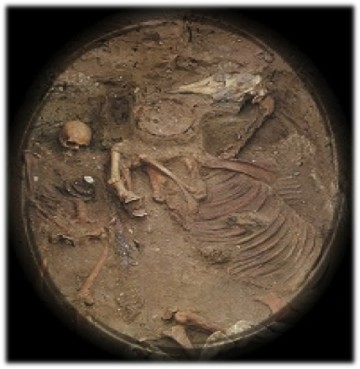 und it particularly heartening that the royal old codger not only knew he’d reached the end of absolute rule, but also wanted to lie in the resting place of a “virgin princess,” an ancient figure that had been forced underground and held in a state of arrested development. The dream emphasizes that this symbol of untapped feminine wisdom and power is not in fact dead. When the light of day touches her ancient bones, Jung explains, “she comes to life again and changes into a black horse, which in Plato’s parable stands for the unruliness of the passions. Anyone who follows this horse comes to the desert, into a wild land remote from men—an image of spiritual and moral isolation. But there lies the keys of paradise.”
und it particularly heartening that the royal old codger not only knew he’d reached the end of absolute rule, but also wanted to lie in the resting place of a “virgin princess,” an ancient figure that had been forced underground and held in a state of arrested development. The dream emphasizes that this symbol of untapped feminine wisdom and power is not in fact dead. When the light of day touches her ancient bones, Jung explains, “she comes to life again and changes into a black horse, which in Plato’s parable stands for the unruliness of the passions. Anyone who follows this horse comes to the desert, into a wild land remote from men—an image of spiritual and moral isolation. But there lies the keys of paradise.”
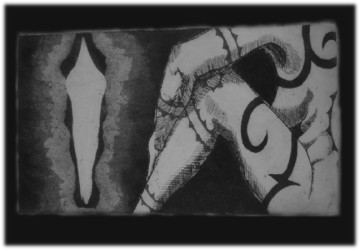

Even when I first read this material in the early 1990s, it struck me that there were several very good reasons why the princess’ bones would turn into a mare—and not for the superficial reason that Jung, by way of Plato (and Freud for that matter), suggested. Now more than ever, I believe that modern men and women know far less about the true potential of feminine wisdom and power than horses do, a thesis I’ve written extensively about in four books. After all, even when women were accepted into the workplace in the late 20th century, it was most often on the condition that they adopt the highly competitive mindset that our culture developed through a longstanding overemphasis on masculine, logic-centered, conquest-oriented philosophies in which nature, intuition and feeling were subdued in the name of some sort of manifest human destiny. Horses, on the other hand, were teaching me to be both powerful and compassionate through a courageous, nonpredatory perspective. I was learning how to practice a different, much more balanced way of being in the world through following my own mare through the desert outside Tucson, Arizona, paralleling the magician’s adventures chasing a black horse into that desolate wilderness of rock and sand, inadvertently finding the lost keys to paradise in the process.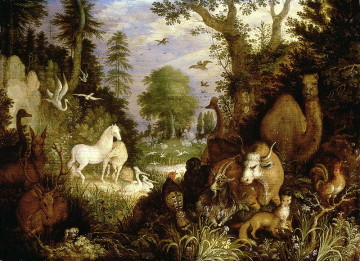
A few paragraphs into his discussion, Jung mentions, rather offhandedly: “this part of the dream is a remarkable paraphrase of the Oxyrhynchus sayings of Jesus, in which the way to the kingdom of heaven is pointed out by animals.” (My emphasis.) Someday, I’d love to find the time to sift through The Apocryphal New Testament by M.R. James to find the original quote Jung is referring to. In any case, the author of so many still-innovative books could not have imagined how much people would learn from animals in the 21st century when larger numbers of people started treating horses and other four-legged companions as sentient beings; when scientific experiments finally proved that animals have emotions, make choices, learn, bond, perform altruistic acts, make rudimentary tools, communicate and think. (The 2012 Cambridge Declaration on Consciousness in Nonhuman Animals made this official.)
A product of his own time, Jung could only see this dream as metaphorical material pointing to invisible processes active in the dreamer’s psyche. Even so, to align with Plato in asserting that the mare represents “the unruliness of the passions” is to miss the dream’s specific reference to the richly nuanced wisdom that gives rise to the form of horse. This wisdom is neither innately unruly nor purely symbolic. It fills living horses with incredible potential to teach people a more balanced, empowered way to live in harmony with other humans and other species. And, as I learned from Rasa, it holds the keys to heal the rift between spirit and nature, masculine and feminine, conscious and unconscious knowledge that occurred when the first man and woman were “expelled from Eden” through their newfound yet extremely limited powers of judgment.
I was most certainly intrigued with the dream’s archetypal imagery and how it might transform someone at a psychological level. But unlike Jung, I realized that it was also possible to live aspects of the vision that he considered purely metaphorical. This fueled my desire to spend the next ten years researching obscure equine-related myths from around the world as a series of strange experiences with my own herd prompted me to go deeper and farther afield.
To this day, most seemingly open-minded psychologists, Jungian analysts and mythologists aren’t ready to entertain the notion that real, flesh and blood horses might be able to lead humans to wholeness. But that, ultimately, was what Rasa taught me. And my first big hit of this possibility, the one that still makes my head spin, is the experience I hinted at in The Tao of Equus—and am only now willing reveal in all its strange, wondrous—and still-perplexing—glory.
Rising to the Surface
Over 15 years and three books after this mythic encounter with Rasa, I was finally able to translate a portion of The Creation According to Eve into a succinct world view in my fourth book The Power of the Herd, though the original experience had informed my own personal, professional and spiritual transformation long before I could communicate it in logic-driven language.
It takes a lot of hard work to stuff significant experiences into little packages made of words—for one very simple yet infuriating reason: Only about ten percent of human communication is verbal. That leaves a huge amount of information we feel, see, and intuit in the nonverbal range. Like Eve, we are essentially “struck speechless by the immensity of the void,” by all those invisible feelings and forces that contribute to life’s richest lessons, including the perceptual shifts that can effect change, personal healing and culture-wide transformation. To make matters worse, the logical mind’s tendency to judge, if not completely reject that “other 90 percent” (forms of knowledge that lie beyond words and mathematical formulas), causes incredible suffering, leaving us with feelings of discontent and emptiness, feelings that paradoxically arise from a universe of nonverbal wisdom we sense is there but don’t know how to access on demand and share with others.
As I wrote at the beginning of Chapter Five in The Power of the Herd, some unfortunate feature of human consciousness actually makes it worse, a dilemma so ancient it was captured in the story of Adam and Eve: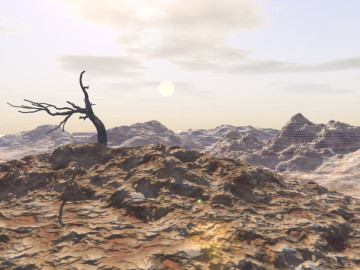
The human psyche is a dynamic ecosystem. Without the right balance of day and night, sunshine and rain, predator and prey, culture and nature, a landscape originally designed to support life turns into a desert, a dust bowl, an apocalyptic, post-nuclear nightmare of desolation and alienation.
In symbolic terms, daylight represents conscious awareness: what we can see and name, predict and command. Much of that “other 90 percent” operates subconsciously or unconsciously, moving stealthily through the night, resisting full explanation and domestication. Yet people don’t just shy away from darkness in favor of the light. Some odd quirk of human behavior forces each generation to relive the fall of Adam and Eve in all kinds of crafty, covert ways.
Scientists and atheists are not immune. Practical modern minds tend to glorify what is light, logical, socially-acceptable, profitable, and/or controllable. Anything outside each person’s current worldview is shrouded in darkness—not just unknown, not just suspect, but damned. This includes forms of perception. If you’re fanatically religious, you’re likely to revere faith and submission to established theological doctrine while distrusting reason, intuition, and feeling. If you’re a genetic researcher, on the other hand, you’re much more apt to promote reason and established scientific doctrine while discounting faith, feeling, and intuition. Either way, significant forms of nonverbal awareness are outlawed, remaining grossly underdeveloped. Families, tribes, religious and political organizations accentuate this self-limiting tendency, socializing members to accept a particular set of static judgments, inspiring people to smugly dismiss, actively ostracize, threaten, or even kill those who operate from a different perspective.
 No wonder so many of us reach middle age thirsting for something indescribable—while feeling frightened or guilty about it. We’ve been reared by a culture of desert dwellers: obsessive, rain-phobic sun worshippers who shine massive spotlights at the stars to chase away the night. The mysterious yet nourishing waters of emotion, empathy, instinct, artistic and mythic insight, gut feelings, and intersubjective awareness have all but dried up in many schools and professions. And it promises to get worse in the information age. After all, how do you quantify love, or Tweet your deepest, most elusive dreams?
No wonder so many of us reach middle age thirsting for something indescribable—while feeling frightened or guilty about it. We’ve been reared by a culture of desert dwellers: obsessive, rain-phobic sun worshippers who shine massive spotlights at the stars to chase away the night. The mysterious yet nourishing waters of emotion, empathy, instinct, artistic and mythic insight, gut feelings, and intersubjective awareness have all but dried up in many schools and professions. And it promises to get worse in the information age. After all, how do you quantify love, or Tweet your deepest, most elusive dreams?
To people who aren’t particularly religious, the fall of Adam and Eve may seem like a quaint little folktale, but it’s actually a brilliant teaching story, a perceptive, richly nuanced assessment of the flaw behind all human flaws: the premature acquisition of the knowledge of good and evil. The first man and woman, as you may recall, ate the forbidden fruit and were promptly expelled from paradise. But debates about why a benevolent God would put that disturbing tree in the garden usually ignore the possibility that it was planted for some future use: that the fruit would swell to ripeness as humanity itself matured.
Newly created and innocent to the core, Adam and Eve simply couldn’t fathom the master plan of a fluid, multi-faceted intelligence. From their pristine yet undeveloped consciousness, parental cautions to stay away from that one compelling tree sounded stern and arbitrary. And so, like a couple of curious five-year-olds with no impulse control, they tasted the bitter knowledge of good and evil, resulting in the uniquely human compulsion to judge everything as either innately right or wrong, useful or useless, blessed or sinful.
Then, of course, they looked for someone else to blame. Adam complained that the woman tempted him to disobey God. And Eve became the first human to claim that “the Devil made me do it.” Waves of fear and shame followed these stunned, over-stimulated little creatures out of Eden, leaving their descendants to manage the divine gift of judgment from a confused, hopelessly dualistic, dangerously limited point of view.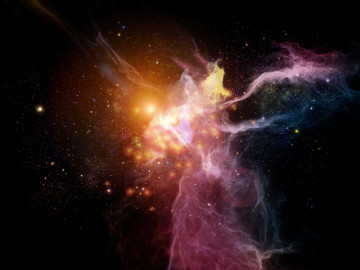
Historically and across all cultures, groups of people mutually reinforce the tendency to deny wholeness in favor of the light, forgetting that God is not the sun, but the one who invented day and night, sound and silence, form and formlessness, freedom and restraint, male and female, heaven and earth, and a host of other opposites as tools of the creator’s trade. Adventurous souls sometimes plunge into darkness, engaging in obsessively hedonistic, risky, or outright criminal behavior as a form of rebellion, but here again they fail to achieve balance—and usually look for a scapegoat (society, parents, divorce, drugs/alcohol) to blame for their destructive, short-sighted ways. Only by exploring and integrating light and dark, spirit and matter, verbal and nonverbal awareness, predatory and non-predatory power can we ever hope to reach our true potential.
Primal Reunion
At the Vancouver Peace Summit in 2009, the Dalai Lama said something that “ricocheted around the globe.” He revealed that he was a feminist, and he announced that “the world will be saved by Western women.”
His assertion aligned with the promise of recent history. In the last 75 years or so, “the weaker sex” has proven that it’s not weak at all. Women have fought valiantly and humanely for the rights denied to them in previous eras, gaining unprecedented freedom to follow their dreams, join the workforce, and, most recently, find a voice in politics. But the task of changing our conquest-oriented, nature-phobic, logic-addicted culture involves more than succeeding in “a man’s world.” Women and men must find a new balance of qualities that were long ago segregated into “masculine” and “feminine” roles. Furthermore, both sexes must juggle two forms of consciousness the modern mind interprets as paradoxical, namely, maintaining a connection to logos while resurrecting the power of the mythos, accessing the long buried wisdom of the past in order to create new stories of transformation. Otherwise we will continue to suffer the hopelessness of the current, most popular myth, the one we see in films and read in futuristic novels over and over again: that of nuclear war and planetary devastation.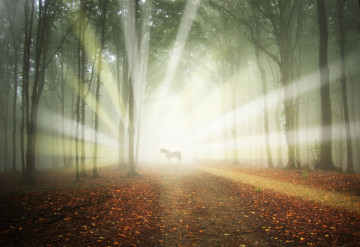
I believe that to alter this vision, we must finally invite nonhuman animals into the conversation, not only as metaphorical images or “spirit guides,” but as intelligent teachers and loving companions who followed us out of the Garden of Eden to “remind us of the landscape of paradise.” For thousands of years, our four-legged brothers and sisters have endured humanity’s fitful adolescent fantasies of world domination, while carrying the very wisdom that civilization lost eons ago, waiting for the moment when people would exhaust themselves sufficiently enough to sit down, shut up, and humbly listen to the subtle yet powerful voices of creatures who have been supporting us—not just physically, but spiritually—all along.
This is not a new idea, though it certainly remains obscure. Centuries ago, some controversial early Christians hid a manuscript in a cave—a text that, among other things, suggested “The way to the kingdom of heaven is pointed out by animals.” Under the tutelage of my horses, I’ve discovered that this is not exclusively a metaphor (though awakening metaphorical insights in humans seems to be an important part of their job). Horses also meet us in the “concrete” world, literally helping us to exercise a balance of masculine and feminine, power and compassion, reason and feeling.
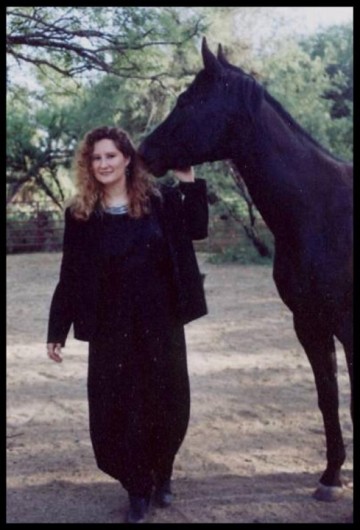
In the mid-1990s, a black horse named Tabula Rasa inspired The Creation According to Eve, providing me with a whimsical map to explore the vast territory of consciousness from a feminine perspective, and make sense of something long unspoken. It has been the adventure of a lifetime, one I hope you take the opportunity to share with me through listening to my Spoken Word site, reading books on symbols of transformation, spending time with horses and other animals, attending a workshop with one of over 254 Eponaquest Instructors throughout the world, and perhaps taking a trip to Arizona to spend some time with my beloved herd.
Wishing you the happiest of holidays, and much joy and success in 2015!
Linda Kohanov
For upcoming workshops, see the Eponaquest website at www.eponaquest.com
Again, you can listen to The Creation According to Eve at Linda’s Spoken Word site at https://lindakohanov.bandcamp.com/album/the-creation-according-to-eve.